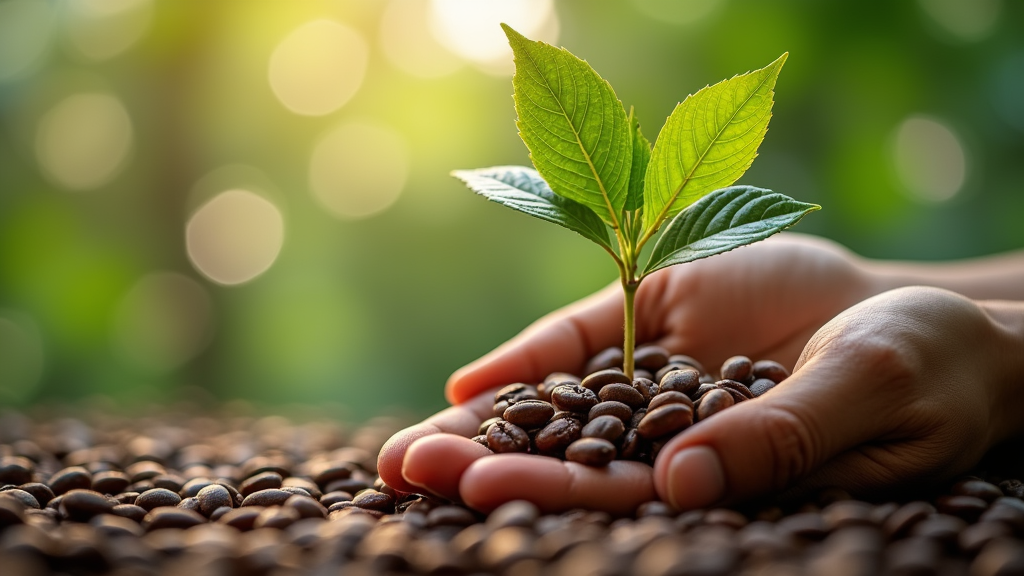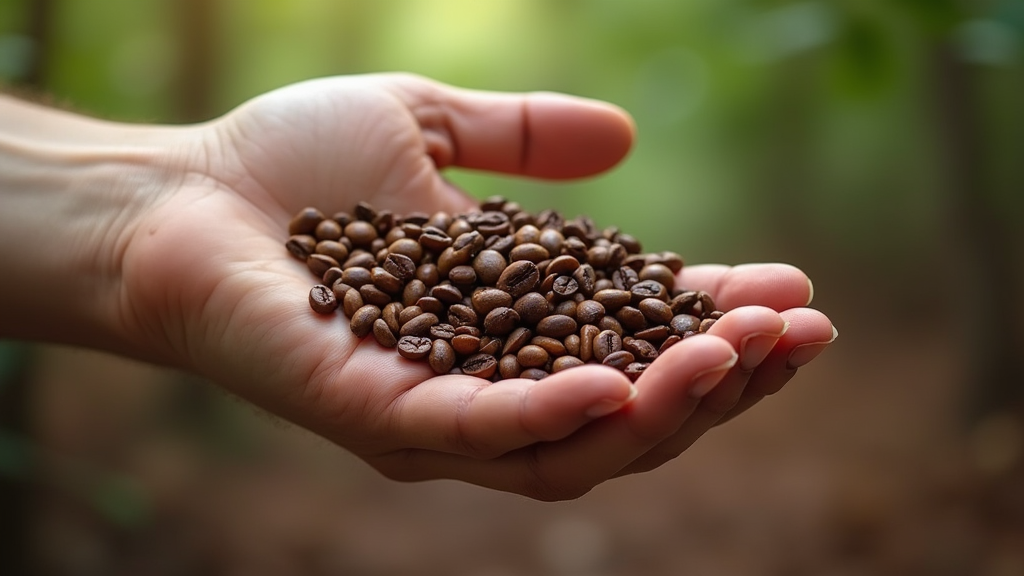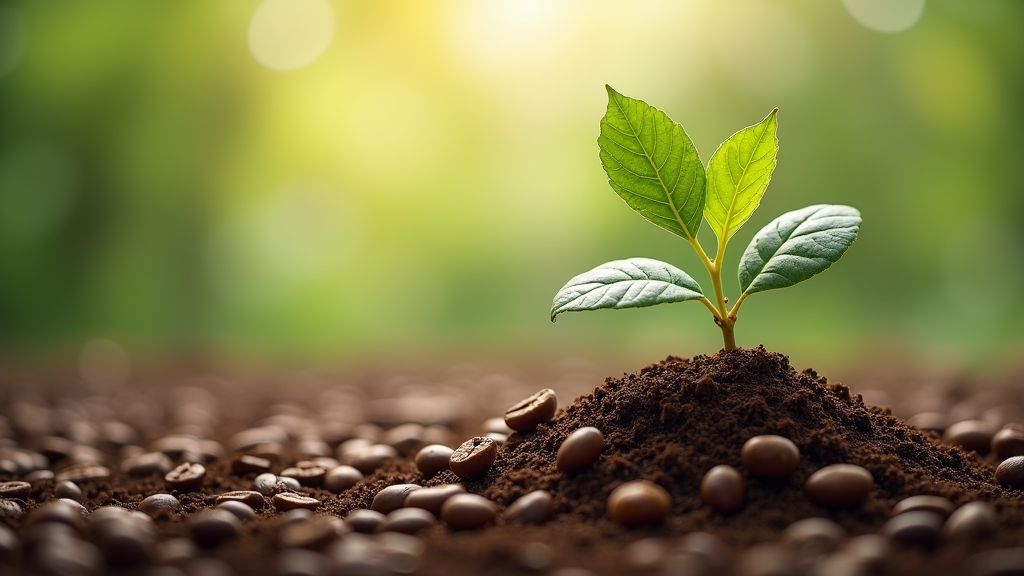Table of Contents
- Exploring: Can You Grow Your Own Coffee Beans?
- Understanding: Can You Grow Your Own Coffee Beans Outline
- Detailed Guide: Can You Grow Your Own Coffee Beans?
- Advanced Techniques for Growing Your Own Coffee Beans
- Optimizing Indoor Coffee Bean Growth: Light and Climate
- Controlling Environment for Thriving Coffee Bean Plants
- Efficient Watering Techniques for Coffee Bean Cultivation
- Roasting Your Homegrown Coffee Beans: Achieving Perfect Flavor
- Brewing Techniques to Maximize Your Coffee Bean Harvest
- Sustainability and Organic Practices for Coffee Bean Growing
- Organic Pest Control Methods for Coffee Bean Plants
- Water Conservation Strategies for Growing Coffee Beans
- Composting for Nutrient-Rich Soil in Coffee Bean Gardens
- Can You Grow Your Own Coffee Beans Outline: Final Thoughts
Exploring: Can You Grow Your Own Coffee Beans?

Feasibility of Growing Your Own Coffee Beans
Growing coffee beans at home is indeed feasible, although it requires the right set of conditions. You’ll need patience, a keen eye for detail, and a solid understanding of the coffee plant’s specific needs. Ultimately, the feasibility hinges on your local climate, the amount of space you can dedicate, and your commitment to providing consistent care.
Reasons to Grow Your Own Coffee Beans at Home
There are several compelling reasons to embark on the journey of growing your own coffee. Imagine enjoying fresh, high-quality coffee with unique and personalized flavor profiles. Over time, you might even realize cost savings compared to the expense of regularly purchasing premium coffee. Beyond the practical benefits, there’s a deep sense of personal satisfaction that comes from nurturing, harvesting, and processing your own coffee. Plus, you can adopt sustainable and organic methods, making it an environmentally friendly practice.
Learning to Grow Your Own Coffee Beans Successfully
In the following sections, you’ll discover everything you need to know to successfully grow your own coffee. You’ll gain an understanding of the different coffee plant varieties and their unique requirements. We’ll guide you on how to establish the ideal growing environment tailored for coffee plants. You’ll also receive step-by-step instructions for planting, nurturing, and harvesting your coffee beans. Finally, we’ll explore the techniques for processing, roasting, and brewing your homegrown coffee to perfection.
Understanding: Can You Grow Your Own Coffee Beans Outline
Exploring Different Coffee Plant Varieties for Home Growing
When considering growing your own coffee, understanding the different varieties is crucial. Each type has unique characteristics affecting its suitability for home cultivation.
- Arabica:
- Robusta:
- Liberica and Excelsa:
- Prefers cooler climates and higher altitudes, making it ideal for specific regions.
- Known for its smooth, aromatic flavor, a favorite among coffee drinkers.
- Typically grows up to about 12 feet (3.7 meters) tall, manageable for some home setups.
- More susceptible to diseases, requiring diligent care and attention.
- Thrives in warmer, lower altitudes, offering more flexibility in growing locations.
- Boasts a stronger, bolder flavor with a higher caffeine content, appealing to those who like a strong cup.
- Can grow up to 32 feet (9.8 meters) tall, potentially requiring more space.
- Hardier and requires less care than Arabica, making it a good option for beginners.
- These varieties have unique growing requirements and distinct flavor profiles.
- They are less commonly grown at home due to their specific needs and availability.
Creating Ideal Growing Conditions for Coffee Beans
Successfully growing coffee beans at home depends heavily on replicating the ideal environmental conditions. Attention to these factors will significantly impact your plant’s health and yield.
- Temperature:Maintain a consistent temperature between 60°F to 70°F (15°C to 24°C) for optimal growth.
- Climate:Coffee plants thrive in tropical or subtropical climates, characterized by consistent rainfall.
- Sunlight:Provide partial shade in hotter areas to prevent scorching, while ensuring sunlight-rich exposure in cooler regions.
- Soil:Use well-drained soil rich in organic matter, with a slightly acidic to neutral pH (6.0 to 6.5).
- Water:Ensure consistent moisture, avoiding waterlogging, which can damage the roots.
- Humidity:Aim for 60% to 70% relative humidity to mimic the plant’s natural environment.
Detailed Guide: Can You Grow Your Own Coffee Beans?

Preparation and Planting Coffee Beans Successfully
Starting your coffee bean journey requires careful preparation and planting. Whether you choose to start from seeds or seedlings, understanding the process is crucial for success.
- Starting from Seeds:
- Use fresh, green (unroasted) coffee beans from a reputable source.
- Soak seeds in water for 24 hours before planting.
- Plant seeds about 1 inch deep in a warm, shaded area.
- Use seed-starting mix or organic potting soil.
- Germination can take 2-6 weeks.
- Starting from Seedlings:
- Easier for beginners, bypassing the germination process.
- Choose healthy seedlings from a nursery.
- Transplant seedlings into larger pots when they reach 6 inches.
- Space plants about 3 feet apart.
- Soil Preparation:
- Use well-draining soil mix (potting soil, compost, sand).
- Ensure soil is rich in nutrients.
- Aim for a pH level between 6.0 and 6.5.
Caring for Coffee Plants: Growing Guide
Proper care is essential for healthy coffee plants. This involves consistent watering, adequate sunlight, regular fertilizing, pruning, and managing pests and diseases.
- Watering:
- Maintain consistent moisture without overwatering.
- Water deeply once or twice a week.
- Ensure good drainage to prevent root rot.
- Water when the top inch of soil feels dry.
- Sunlight:
- Provide bright, indirect sunlight; east-facing windows are ideal.
- Protect from intense direct sunlight to prevent leaf burn.
- Introduce young plants gradually to sunlight.
- Fertilizing:
- Apply a balanced organic fertilizer (e.g., 20-20-20) every few months during the growing season.
- Use a mild liquid fertilizer every two weeks during the growing season.
- Reduce fertilization in fall and winter.
- Pruning:
- Prune regularly to shape and control plant size.
- Remove dead or damaged leaves to promote growth.
- Trim branches to promote air circulation and sunlight penetration.
- Pest and Disease Management:
- Monitor for pests like mealybugs, aphids, and spider mites.
- Watch for diseases like root rot and leaf rust.
- Use natural pest control methods like neem oil or insecticidal soap.
- Ensure good air circulation and avoid overhead watering to prevent diseases.
Harvesting and Processing Your Homegrown Coffee Beans
The final steps in growing your own coffee involve harvesting the cherries and processing the beans. This includes drying, depulping, and roasting to achieve the desired flavor.
- Harvesting:
- Coffee plants typically begin producing coffee cherries after 3 to 4 years.
- Wait until cherries are bright red or yellow and slightly soft.
- Pick ripe cherries by hand to ensure quality.
- Use even picking across the plant to prevent stress.
- Processing Coffee Beans:
- Drying:Spread cherries for sun drying, ensuring even drying.
- Depulping:Remove outer pulp to reveal green beans.
- Second Drying:Ensure beans reach a moisture content of around 11%.
- Roasting:Roast beans to achieve the desired color and flavor.
- Grinding:Grind beans to the appropriate size based on your brewing method.
- Dry Method:Involves sun-drying cherries and removing outer layers.
- Wet Method:Uses water and fermentation to remove outer skin for a possibly cleaner flavor.
Advanced Techniques for Growing Your Own Coffee Beans
Optimizing Indoor Coffee Bean Growth: Light and Climate
Optimizing indoor coffee bean growth hinges on meticulous environmental control. Consistent temperatures (60-75°F), humidity (50-60%), and good air circulation are vital, supplemented by strategic watering techniques like drip irrigation to prevent root rot and conserve water.
Growing coffee beans indoors requires careful attention to light and climate control. South-facing windows provide the best natural light, but grow lights can supplement or replace sunlight, especially during winter months. Maintaining a consistent indoor temperature between 60°F and 75°F is crucial, along with a humidity level of 50% to 60%. To aid germination, consider using plastic wrap to maintain humidity around the seeds.
Controlling Environment for Thriving Coffee Bean Plants
Effective environmental control is key to successful coffee bean cultivation. Use humidifiers or pebble trays to increase humidity if needed. Good air circulation is also essential to prevent fungal diseases, which can be a common problem in humid environments. Regular monitoring and adjustments will help ensure your coffee plants thrive.
Efficient Watering Techniques for Coffee Bean Cultivation
Proper watering is essential for healthy coffee bean plants. Drip irrigation is an excellent method for conserving water and maintaining consistent soil moisture. Be careful to avoid overwatering, as this can lead to root rot, a common issue in coffee cultivation. Allow the soil to dry slightly between waterings.
Roasting Your Homegrown Coffee Beans: Achieving Perfect Flavor
Roasting is a critical step in transforming green coffee beans into flavorful roasted beans. Monitor the temperature and time carefully to achieve your desired roast level, from light to dark. You can use a dedicated coffee roaster or even your oven. The goal is to roast the beans evenly to bring out their unique flavors.
Brewing Techniques to Maximize Your Coffee Bean Harvest
Once your coffee beans are roasted, the next step is brewing. Grind the beans to your preferred consistency, depending on your chosen brewing method. Use water that is just off the boil (195°F to 205°F or 90°C to 96°C). Experiment with different brewing methods like French press, pour-over, or espresso to find what you enjoy most. Adjust the coffee-to-water ratio to suit your taste preferences.
Sustainability and Organic Practices for Coffee Bean Growing
Embracing sustainability and organic practices is beneficial for both your coffee plants and the environment. Use natural fertilizers and compost to nourish your plants, avoiding synthetic fertilizers that can harm the soil and surrounding ecosystem.
Organic Pest Control Methods for Coffee Bean Plants
Protect your coffee bean plants from pests using organic pest control methods. Neem oil is an effective natural insecticide. Avoid chemical pesticides, as they can harm beneficial insects and disrupt the natural balance of your garden. Regular inspection and early intervention are key to managing pests organically.
Water Conservation Strategies for Growing Coffee Beans
Water conservation is crucial, especially in drier climates. Implement water-saving methods like drip irrigation to deliver water directly to the roots of your coffee plants. Collect rainwater in barrels or tanks to use for watering, reducing your reliance on municipal water sources.
Composting for Nutrient-Rich Soil in Coffee Bean Gardens
Composting is a great way to create nutrient-rich soil amendments for your coffee bean plants. Compost kitchen scraps, yard waste, and other organic materials to create a valuable resource that improves soil structure, fertility, and water retention. This reduces waste and provides your plants with essential nutrients.
Can You Grow Your Own Coffee Beans Outline: Final Thoughts

Recapping Essential Steps for Growing Coffee Beans
Growing your own coffee beans involves several key steps. First, you need to choose the right coffee variety suitable for your climate and provide ideal growing conditions, including proper sunlight, temperature, and soil. Next, you’ll focus on planting and caring for your coffee plants, which involves regular watering, fertilization, and pest control. Once your plants mature, you’ll harvest and process your own coffee beans, followed by roasting and brewing to enjoy the final product.
Reviewing the Benefits and Challenges of Homegrown Coffee
The benefits of growing your own coffee are numerous. You get to enjoy fresh, high-quality coffee with unique flavor profiles that you won’t find in store-bought beans. Over time, you may also realize potential cost savings compared to buying premium coffee regularly. Above all, there’s immense personal satisfaction derived from nurturing your plants and harvesting your own coffee. However, be prepared for challenges. Growing coffee requires patience, attention to detail, and a commitment to consistent care. You’ll need to monitor your plants for pests and diseases, adjust your care routine as needed, and be prepared for potential setbacks.
Final Encouragement for Your Coffee Growing Journey
Growing your own coffee beans can be a profoundly rewarding experience. It connects you to the origins of your favorite beverage and allows you to appreciate the work that goes into producing a single cup of coffee. With the right knowledge and dedication, you can cultivate healthy coffee plants and enjoy fresh, delicious coffee from your own garden. Don’t be afraid to start small, experiment with different varieties and techniques, and most importantly, enjoy the process of learning and growing.

